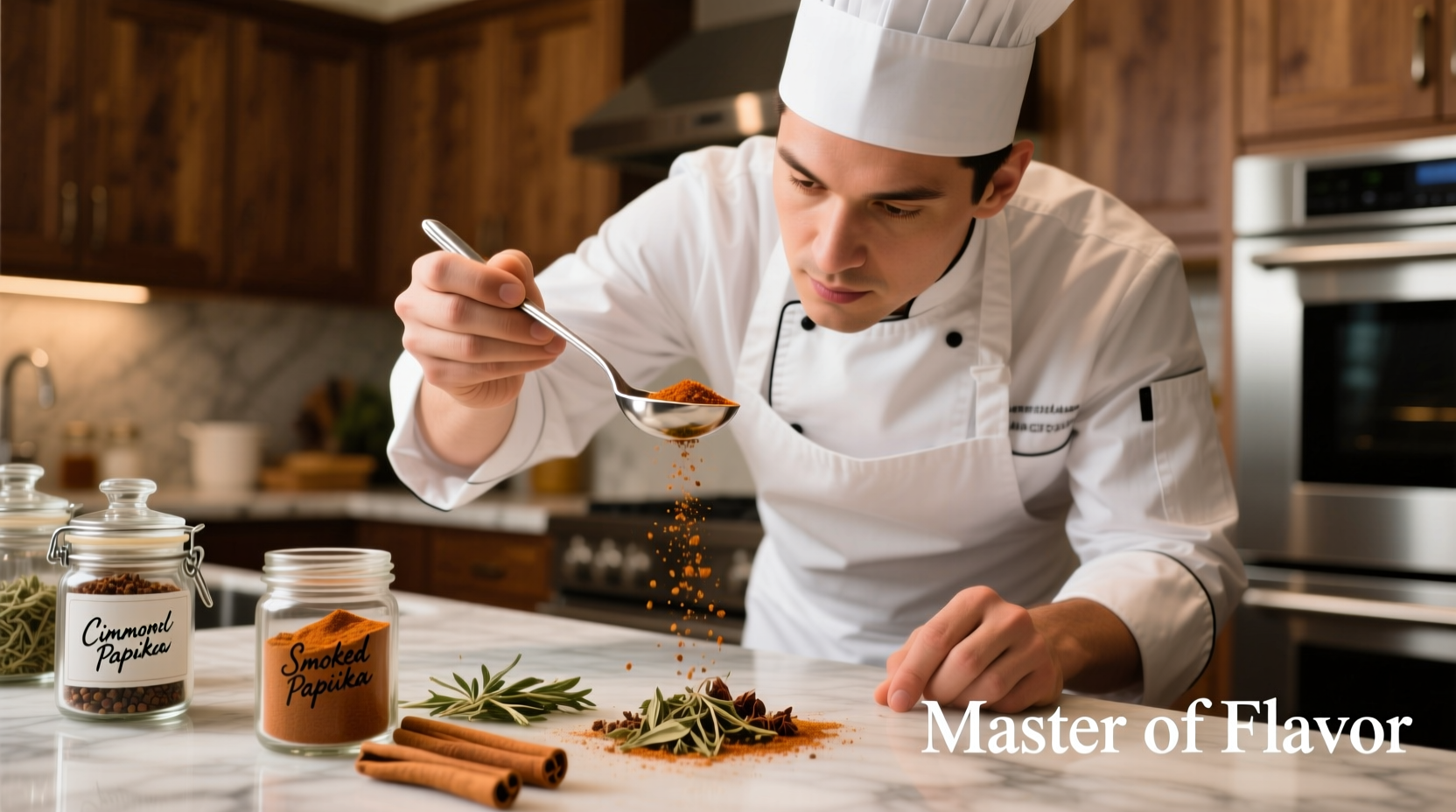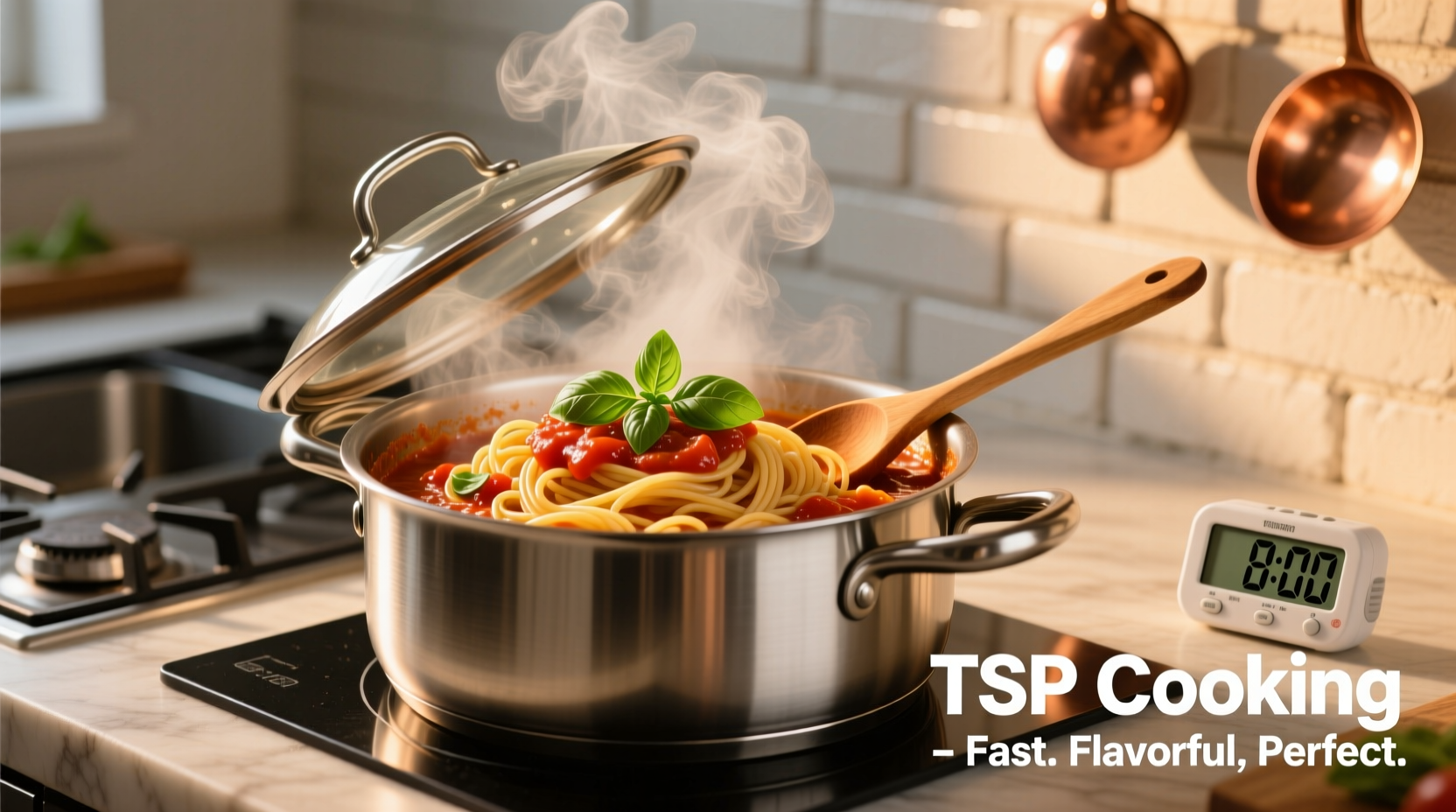Ever stared at a recipe wondering what is tsp cooking really means? You're not alone. Many home cooks mistakenly believe "tsp" refers to a specific cooking method rather than the essential measurement abbreviation it actually is. Understanding this simple notation can transform your cooking accuracy and recipe success rate.
Demystifying TSP: It's Not What You Think
"TSP cooking" isn't a culinary technique—it's a common misunderstanding of recipe notation. When recipes specify "tsp," they're using the standard abbreviation for teaspoon, one of the most critical small-volume measurements in cooking and baking. This tiny measurement makes the difference between a perfectly seasoned dish and a culinary disaster, especially when working with potent ingredients like spices, baking powder, or vanilla extract.
Professional chefs rely on precise teaspoon measurements daily. As Antonio Rodriguez explains: "In my years working in Michelin-starred kitchens, I've seen more recipes fail from incorrect small measurements than any other single factor. That quarter teaspoon of cayenne can make or break a sauce."
Why Teaspoon Measurements Matter More Than You Think
Teaspoon measurements provide the precision needed for ingredients where small variations create dramatic flavor differences. Unlike cup measurements for bulk ingredients, tsp amounts control the flavor profile of your entire dish. Consider these critical applications:
- Baking chemistry - Precise amounts of baking powder (typically 1-2 tsp per cup of flour) determine rise and texture
- Spice balance - 1/4 tsp too much cayenne can overwhelm a dish
- Flavor extracts - Vanilla extract is measured in tsp because its potency requires exact amounts
- Salt control - Professional kitchens measure salt in tsp for consistent seasoning
| Teaspoon Measurement | Milliliters | Common Recipe Uses |
|---|---|---|
| 1/8 tsp | 0.6 mL | Delicate spices like saffron, potent extracts |
| 1/4 tsp | 1.25 mL | Garlic powder, cayenne, baking soda in small batches |
| 1/2 tsp | 2.5 mL | Salt in sauces, ground spices, vanilla extract |
| 1 tsp | 5 mL | Standard spice measurements, baking powder, yeast |
The Evolution of Standardized Measurements
Before standardized measurements, cooks relied on vague instructions like "a pinch of salt" or "a handful of flour." The teaspoon measurement emerged during the Industrial Revolution when consistent manufacturing required precise specifications. According to culinary historians at the Culinary Institute of America, standardized measuring spoons became common in American kitchens after Fannie Farmer's 1896 Boston Cooking-School Cook Book insisted on level measurements rather than "heaping" or "scant" amounts.
Today, the teaspoon remains a globally recognized measurement, though slight variations exist between countries. The US teaspoon equals 4.93 mL, while the metric teaspoon used internationally equals exactly 5 mL—a difference small enough that most recipes treat them interchangeably.
When Teaspoon Precision Becomes Critical
Not all recipes require exact tsp measurements. Understanding context boundaries helps determine when precision matters most:
- Essential precision: Baking recipes, spice blends, cocktail recipes, and candy making where chemical reactions depend on exact proportions
- Moderate precision: Sauces, marinades, and dressings where balance of flavors is important
- Flexible measurements: Soups, stews, and braises where you can adjust seasoning at the end
"Many home cooks don't realize that baking is essentially food chemistry," notes Antonio Rodriguez. "When a recipe calls for 1 1/2 tsp of baking powder per cup of flour, that ratio creates the perfect lift without leaving a metallic aftertaste. Add just half a teaspoon more, and your muffins will taste like chalk."
Mastering Teaspoon Measurements: Pro Techniques
Professional kitchens use specific techniques to ensure accurate tsp measurements:
- Use proper tools - Invest in a dedicated measuring spoon set (not your cutlery teaspoons)
- Level off dry ingredients - Sweep a straight edge across the top for exact amounts
- Measure liquids at eye level - Place spoon on flat surface and check measurement directly
- Don't pack dry spices - Unless recipe specifically states "packed"
- Store spoons properly - Keep them organized to avoid grabbing the wrong size
For ingredients like baking powder or yeast, Rodriguez recommends "scoop, level, and double-check"—a technique that prevents the common mistake of tapping spoons against the container edge, which compacts the ingredient and adds extra volume.

Common TSP Measurement Mistakes and How to Avoid Them
Even experienced cooks make these teaspoon errors:
- Confusing tsp with tbsp - A tablespoon equals 3 teaspoons; this mistake can triple your spice amount
- Using eating utensils - Tablespoons vary widely in size; dedicated measuring spoons are standardized
- Estimating instead of measuring - "A pinch" varies dramatically between cooks
- Measuring over the sink - Spills mean inaccurate amounts
- Not leveling properly - Heaping vs. level makes a 30-50% difference
When working with potent ingredients like cayenne pepper or baking soda, even small measurement errors create dramatically different results. As culinary research from the American Test Kitchen shows, exceeding recommended tsp amounts by just 25% can make baked goods taste metallic or cause sauces to become unpleasantly spicy.
Practical TSP Conversion Guide
Need to convert between measurement systems? Here's what you need to know:
- 1 US teaspoon = 1/6 US fluid ounce = 4.93 mL (often rounded to 5 mL)
- 3 teaspoons = 1 tablespoon
- 48 teaspoons = 1 cup
- 1/4 teaspoon = pinch (approximately)
- 8 dashes = 1/4 teaspoon (for liquid flavorings)
When converting older recipes, note that pre-19th century "teaspoon" measurements varied significantly by region and household. Modern standardized measurements only became common after the late 1800s, as documented by food historians at the Smithsonian National Museum of American History.
When to Trust Your Palate Over the Teaspoon
While precision matters, professional cooking also requires understanding when to adjust. Rodriguez advises: "Master the measurements first, then learn when to trust your senses. After you've made a béchamel sauce using the exact 1/4 tsp of nutmeg specified, you'll develop the intuition to know when it needs just a bit more."
This balance between precision and intuition separates novice cooks from professionals. Start by following tsp measurements exactly, then as you gain experience, you'll understand how to adjust based on ingredient freshness, personal preference, and specific recipe requirements.











 浙公网安备
33010002000092号
浙公网安备
33010002000092号 浙B2-20120091-4
浙B2-20120091-4